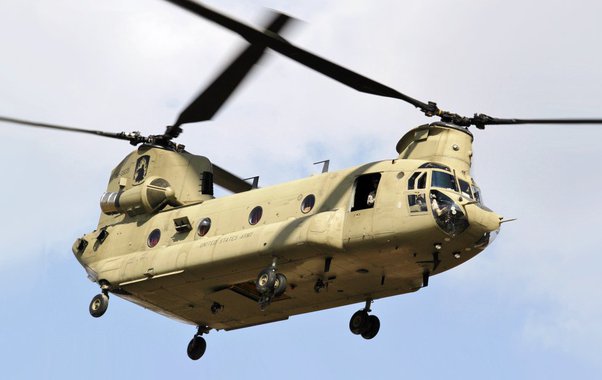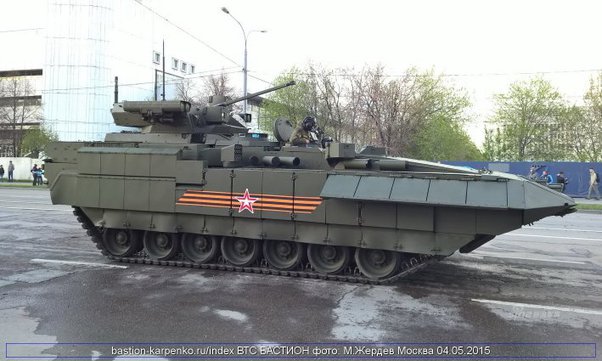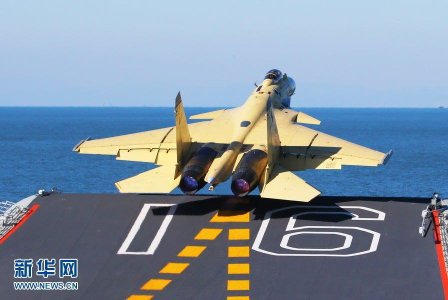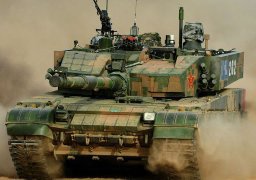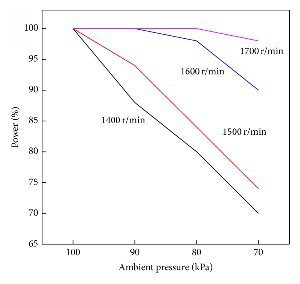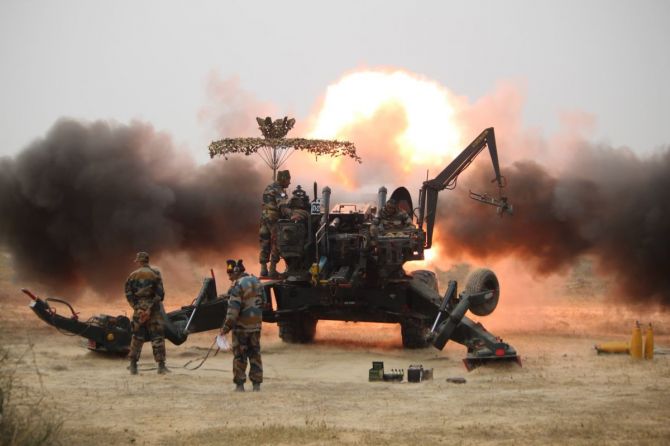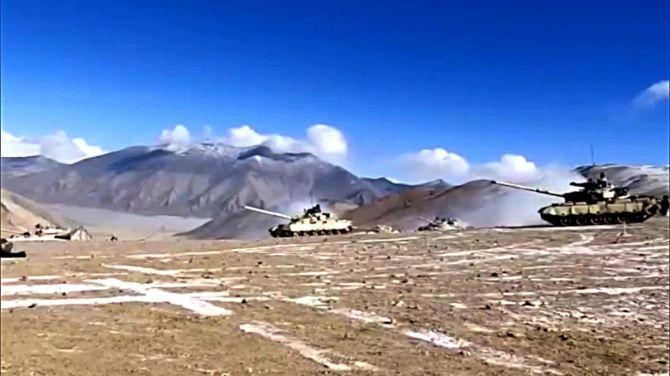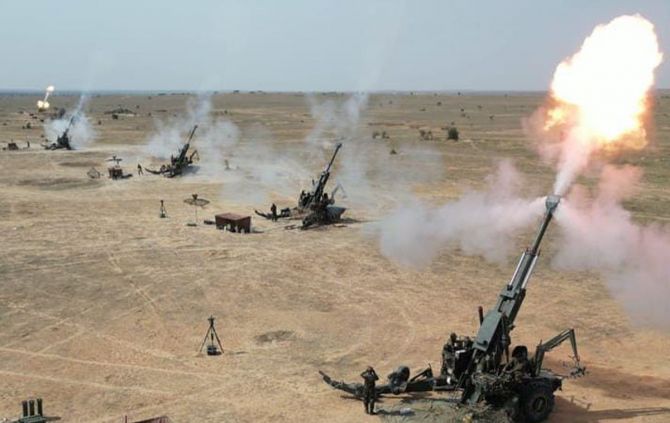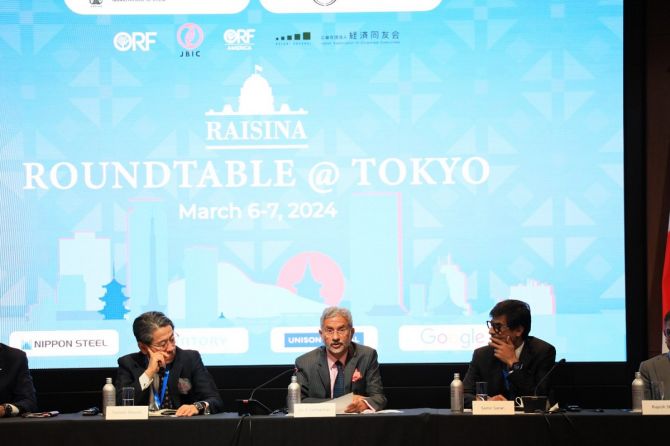Indian, Chinese troops clashed twice after Galwan
At least two previously unknown incidents of skirmishes between the Indian and Chinese troops along the Line of Actual Control (LAC) have come to light with citations for gallantry awards conferred on Indian Army personnel mentioning them.
In early May 2020, troops of the People's Liberation Army and Indian Army engaged in melee at locations along the notional Line of Actual Control (LAC), the disputed boundary between China and India.[1][2] It escalated on 15/16 June 2020 resulting in deaths on both sides. Indian sources reported the deaths of 20 Indian soldiers and casualties of at least 45 Chinese soldiers.[3][4] China reported 4 deaths.[5][6] On 7 September, for the first time in 45 years, shots were fired along the LAC, with both sides blaming each other for the firing.[7][8] Indian media also reported that Indian troops fired warning shots at the PLA on 30 August.[9]
Most experts point out that Indian infrastructure construction along the LAC troubled the Chinese and was one of the multiple major triggers.[10][11] Multiple rounds of diplomatic and military talks followed, including the corps-commander-level meetings, and meetings of existing border dispute management and resolution mechanisms.[12][13] The 13th round of corps-commander talks took place on 10 October 2021.[14][15] Incomplete, partial and complete disengagement and de-escalation has been announced at various locations respectively.[16][17]
The 2020–2022 China–India skirmishes are a part of the larger Sino-Indian border dispute. This is a timeline of events that stretches over the period of the 2020–2022 China–India skirmishes.
In late May, Chinese forces objected to Indian road construction in the Galwan river valley.[18][19] According to Indian sources, melee fighting on 15–16 June 2020 resulted in the deaths of Chinese and Indian soldiers.[20][21] Media reports stated that soldiers were taken captive on both sides and released in the coming few days while official sources on both sides went on to deny this.[22] On 7 September, for the first time in 45 years, shots were fired along the LAC, with both sides blaming each other for the firing.[23][24] Indian media also reported that Indian troops fired warning shots at the PLA on 30 August.[25]
Partial disengagement from Galwan, Hot Springs, and Gogra occurred in June–July 2020 while complete disengagement from Pangong Lake north and south bank took place in February 2021.[26][27] Following disengagement at Gogra in August 2021, Indian analysts pointed out that the LAC has shifted westwards at patrol point 17A (PP 17A).[28][29]
Amid the standoff, India reinforced the region with approximately 12,000 additional workers, who would assist India's Border Roads Organisation in completing the development of Indian infrastructure along the Sino-Indian border.[30][31][32] Experts have postulated that the standoffs are Chinese pre-emptive measures in responding to the Darbuk–Shyok–DBO Road infrastructure project in Ladakh.[33] China has also extensively developed its infrastructure in these disputed border regions and is ontinuing to do so.[34][35] The revocation of the special status of Jammu and Kashmir, in August 2019, by the Indian government has also troubled China.[36] However, India and China have both maintained that there are enough bilateral mechanisms to resolve the situation.[37][38] This includes multiple rounds of colonel, brigadier, and major general rank dialogue, special representatives' meetings,[39][40][41] meetings of the 'Working Mechanism for Consultation and Coordination on China-India Border Affairs' (WMCC),[42][43] and meetings and communication between their respective foreign and defense ministers.[44] On 12 January 2022, the 14th corps-commander-level meeting at Chushul-Moldo Border Personnel Meeting (BPM) point took place.[45] Following the Galwan Valley skirmish on 15 June, some Indian campaigns about boycotting Chinese products were started.[46][47] Action on the economic front included cancellation and additional scrutiny of certain contracts with Chinese firms, and calls were also made to stop the entry of Chinese companies into strategic markets in India.[48][49][50] By November 2020, the Indian government had banned over 200 Chinese apps, including apps owned by Alibaba, Tencent, Baidu, Sina, and Bytedance.[51]
Indian and Chinese troops clashed at least twice between September 2021 and November 2022 along the Line of Actual Control (LAC), The Tribune has reported. During this 15-month period, India conducted a series of covert operations aimed at keeping a watch on the Chinese People’s Liberation Army (PLA). These clashes and operations — previously unreported — came to light when citations for gallantry awards were read out during the investitures organised by the Western and Central Army Commands.
It is imperative to maintain the secrecy of such operations in the interests of national security. The Army has taken prompt action to ensure that a video clip which revealed classified information is no longer available in the public domain. Even as the slip-up needs to be probed thoroughly, it is evident that there has been no let-up in the border tensions in recent years, after the Galwan clash of June 2020. Last year, a Pentagon report had claimed that China increased the deployment of forces and ramped up infrastructure, including ‘underground storage facilities near Doklam, a second bridge over the Pangong lake, a dual-purpose airport and multiple helipads’, along the LAC in 2022.
Army Chief Gen Manoj Pande said recently that the LAC situation was ‘stable but sensitive’. Amid a prolonged standoff, India cannot afford to lower its guard. A vigil has to be maintained round the clock in order to pre-empt any misadventure by the PLA. China is keen to gain tactical superiority by making India blink first. New Delhi needs to respond to any provocation cautiously yet firmly. It is laudable that External Affairs Minister S Jaishankar has told his Chinese counterpart that ‘unless a solution is found at the border, they should not expect other relations to move on normally’. The onus is on Beijing to take sincere steps to resolve the LAC dispute and pave the way for putting the bilateral ties back on track.
There were multiple incidents of skirmishes along the LAC between the Indian and Chinese troops in the last three-and-a-half years following the eruption of the eastern Ladakh border row in May 2020. The Chinese troops attempted transgression in the Tawang sector of the LAC as well.
There were multiple incidents of skirmishes along the LAC between the Indian and Chinese troops in the last three-and-a-half years following the eruption of the eastern Ladakh border row in May 2020.
The Chinese troops attempted transgression in the Tawang sector of the LAC as well.
On December 9, 2022, PLA troops tried to transgress the LAC in the Yangtse area of Tawang Sector and unilaterally changed the status quo, Defence Minister Rajnath Singh said in Parliament four days after the incident. Singh said the Chinese attempt was contested by the Indian troops in a firm and resolute manner. Sources said several Indian Army personnel who were part of the team that responded firmly to the attempted Chinese transgression were also conferred gallantry awards at the investiture ceremony.
"The ensuing face-off led to a physical scuffle in which the Indian Army bravely prevented the PLA from transgressing into our territory and compelled them to return to their posts," Singh said on December 13 that year. The scuffle led to injuries to a few personnel on both sides, he said.
"I would like to assure this house that our forces are committed to protecting our territorial integrity and will continue to thwart any attempt made on it. I am confident that this entire house will stand united in supporting our soldiers in their brave effort," Singh said.
Indian and Chinese soldiers clashed at least two times in 2022 along their Himalayan frontier where they have been involved in a bitter standoff since 2020, according to new details that have emerged from the Indian Army's gallantry award citations.
The incidents involved hand-to-hand combat and came as New Delhi and Beijing held a series of diplomatic and military talks to resolve their worst military conflict in decades.
No deaths were reported in these incidents. At least 20 Indian soldiers and four Chinese troops were killed in clashes in the area two years previously, in mid-2020.
These skirmishes in India's Ladakh region, the last of which is now known to have happened in November 2022, show that the tensions along the undemarcated border continued much longer than previously reported.
The Indian and Chinese armies did not immediately respond to requests for comment.
Details of the new clashes emerged after the Indian Army awarded gallantry medals to some of its soldiers, who it said challenged Chinese troops trying to enter Indian territory in at least two incidents in 2022.
In the first incident in January 2022, according to a citation, "several soldiers of the People’s Liberation Army attacked” an Indian Army post in the eastern Ladakh region.
During physical jostling, an Indian soldier wounded at least four Chinese troops and snatched their rifles, "forcing them to go back,” it said. In the second incident in November 2022, Indian troops pushed back "a group of 40 to 50 soldiers” trying to enter Indian territory. A unit of Indian soldiers attacked and injured them, “thus foiling the enemy’s plan to capture the post,” another citation said. The citations also said army units of the two countries were involved in a two-day standoff in an unspecified area in 2022. The military and diplomatic discussions between the nuclear-armed neighbors to resolve the standoff that began in mid-2020 have not resulted in a final resolution yet.The India-China border dispute dates to the 1950s and the two sides fought a brief but bloody war over it in 1962. [52]
India expected more skirmishes with the Chinese soldiers in future, the news agency Reuters reported citing a security assessment by Indian police in the Himalayan region of Ladakh. This comes as several reports have suggested that China has been ramping up military infrastructure in the region. Concerns were also raised after skirmish between Indian and Chinese soldiers along the Line of Actual Control (LAC) in the Tawang sector of Arunachal Pradesh. Reports said that during the face-off, soldiers from both sides sustained "minor injuries".
References
1. Siddiqui, Imran Ahmed (16 June 2023). "'Subjugation and surrender': Military veterans slam Modi government's continuing silence on Galwan". Telegraph India.
- "Video | "Territory Gone, Grazing Ground Now Buffer Zone": Ladakh Leader On Troops Pull-Back". Retrieved 9 October 2022.
- Bhaumik, Anirban; Ray, Kalyan (14 September 2022). "LAC pullback ends amid buzz that India lost ground". Deccan Herald. Retrieved 9 October 2022.
- Singh, Vijaita (20 September 2022). "Grazing lands turning into buffer zones, says chief of village bordering LAC". The Hindu. Retrieved 22 November 2022.
- "China Gained Ground on India During Bloody Summer in Himalayas". Bloomberg.com. 1 November 2020. Retrieved 22 November 2022.
- Bommakanti, Kartik. "China is yet to restore status quo ante on the India-China border". ORF. Retrieved 22 November 2022.
- "Return to status quo ante needed for situation to become normal in Eastern Ladakh: IAF chief". www.telegraphindia.com. Retrieved 22 November 2022.
- "Indian Navy to move MiG-29K fighter jets to north amid border row with China". Hindustan Times. 21 July 2020. Retrieved 21 July 2020.
- "Air Marshal Vivek Ram Chaudhari to take charge of Western Air Command amid tension at LAC". Hindustan Times. 24 July 2020. Retrieved 1 August 2020.
- "Galwan Valley face-off: Indian, Chinese military officials meet to defuse tension". Hindustan Times. 18 June 2020. Retrieved 18 June 2020.
- Negi, Manjeet Singh (13 October 2020). "Lt General PGK Menon takes over as commander of Fire & Fury Corps". India Today. Retrieved 24 October 2020.
- Bhaumik, Anirban (18 June 2020). "Galwan Valley: Indian, Chinese diplomats to hold video-conference soon". Deccan Herald. Retrieved 18 June 2020.
- "Rear Admiral Philipose George Pynumootil, NM Assumes Charge as Flag Officer Naval Aviation (FONA)". 26 February 2019. Retrieved 21 July 2020.
- "IGP Ladakh reviews security arrangements". Daily Excelsior. 9 April 2020. Retrieved 19 June 2020.
- Kakar, Maj Gen Harsha (16 January 2022). "India-China standoff: How possibility of escalation has reduced but that of continued stalemate increased". Firstpost. Retrieved 7 February 2022.
- Swami, Praveen (23 June 2020). "PLA Attacked Indian Troops in Galwan Valley Violating Border Agreements and Protocols". News18 India. Retrieved 7 February 2022.
- "India, Chinese troops face-off at eastern Ladakh; casualties on both sides". Asia News. 16 June 2020. Archived from the original on 16 June 2020. Retrieved 17 June 2020.
- Philip, Snehesh Alex (24 May 2020). "Chinese troops challenge India at multiple locations in eastern Ladakh, standoff continues". The Print. Retrieved 24 May 2020
- Singh, Sushant (24 May 2020). "Chinese intrusions at 3 places in Ladakh, Army chief takes stock". The Indian Express. Retrieved 24 May 2020
- "India soldiers killed in clash with Chinese forces". BBC News. 16 June 2020. Retrieved 16 June 2020.^
- Som, Vishnu (22 June 2020). Ghosh, Deepshikha (ed.). "At Talks, China Confirms Commanding Officer Was Killed in Ladakh: Sources". NDTV.com. Retrieved 22 June 2020
- "China denies detaining Indian soldiers after reports say 10 freed". Al Jazeera. 19 June 2020. Retrieved 26 August 2020
- Gettleman, Jeffrey (8 September 2020). "Shots Fired Along India-China Border for First Time in Years". The New York Times. ISSN 0362-4331. Retrieved 9 September 2020
- Kaushik, Krishn (9 September 2020). "First time in 45 years, shots fired along LAC as troops foil China's bid to take a key height". The Indian Express. Retrieved 9 September 2020.
- Singh, Vijaita (11 September 2020). "LAC standoff | Officials confirm two incidents of firing at south bank of Pangong Tso". The Hindu. ISSN 0971-751X. Archived from the original on 13 September 2020. Retrieved 11 September 2020.
- Rai, Arpan (25 July 2020). "India, China complete troop disengagement at three friction points, focus now on Finger area". Hindustan Times. ANI. Retrieved 26 July 2020.
- Bhalla, Abhishek (19 February 2021). "India, China complete disengagement in Pangong Tso, next round of military talks on Saturday". India Today. Archived from the original on 19 February 2021. Retrieved 27 March 2021.
- Singh, Sushant (11 August 2021). "Gogra Disengagement Raises More Questions About the Situation in Ladakh". The Wire. Archived from the original on 11 August 2021. Retrieved 24 August 2021
- Panag, Harcharanjit Singh (12 August 2021). "Modi government's politics with China is evolving. Gogra disengagement is proof". The Print. Retrieved 24 August 2021
- Singh, Rahul; Choudhury, Sunetra (31 May 2020). "Amid Ladakh standoff, 12,000 workers to be moved to complete projects near China border". Hindustan Times. Retrieved 4 June 2020.
- Ray, Kalyan; Bhaumik, Anirban (1 June 2020). "Amid border tension, India sends out a strong message to China". Deccan Herald. Retrieved 4 June 2020
- Kumar, Rajesh (14 June 2020). "CM flags off train with 1,600 workers for border projects". The Times of India. Ranchi. Retrieved 15 June 2020.
- Singh, Sushant (26 May 2020). "Indian border infrastructure or Chinese assertiveness? Experts dissect what triggered China border moves". The Indian Express. Retrieved 26 May 2020.
- Jaiswal, Mansi (27 May 2020). "China starts construction activities near Pangong Lake amid border tensions with India". Business Today (India). Archived from the original on 5 June 2020. Retrieved 5 June 2020.
- Desai, Shweta (3 June 2020). "Beyond Ladakh: Here's how China is scaling up its assets along the India-Tibet frontier". Newslaundry. Retrieved 5 June 2020.
- Krishnan, Ananth (12 June 2020). "Beijing think-tank links scrapping of Article 370 to LAC tensions". The Hindu. ISSN 0971-751X. Archived from the original on 12 June 2020. Retrieved 15 June 2020.
- Chaudhury, Dipanjan Roy (29 May 2020). "India-China activate 5 pacts to defuse LAC tensions". The Economic Times. Retrieved 3 June 2020.
- Roche, Elizabeth (8 June 2020). "India, China to continue quiet diplomacy on border dispute". LiveMint.com. Retrieved 9 June 2020.
- Sandhu, P.J.S. (21 July 2020). "It Is Time to Accept How Badly India Misread Chinese Intentions in 1962 – and 2020". The Wire. Retrieved 14 October 2020.
- Sagar, Pradip R (13 August 2020). "100 days on, India-China border in Ladakh still remains tense". The Week. Retrieved 30 August 2020.
- Mitra, Devirupa (6 June 2020). "Ahead of Border Talks With China, India Still Unclear of Reason Behind Troops Stand-Off". The Wire (India). Archived from the original on 6 June 2020. Retrieved 6 June 2020. On Saturday, Indian and Chinese military officials of Lieutenant General-rank are likely to meet at a border personnel meeting (BPM) ... The various BPM meetings – led first by colonels, then brigadiers and then finally over three rounds by major general-rank officers – have until now yielded no results.
- Philip, Snehesh Alex (12 August 2020). "No progress made in India-China major general-level talks, all eyes now on diplomatic parleys". ThePrint. Retrieved 28 August 2020.
- "China Ups Rhetoric, Warns India of 'Severe Consequences' for Violent Clash". The Wire. 25 June 2020. Retrieved 25 June 2020.
- Sarkar, Shankhyaneel (5 September 2020). "At SCO meet, Rajnath Singh tells China to restore status quo at LAC". Hindustan Times. Retrieved 5 September 2020.
- Kaushik, Krishn (14 January 2022). "No breakthrough in 14th round of India-China military talks, but two sides agree to 'meet soon'". The Indian Express. Retrieved 4 February 2022.
- Suneja, Kirtika; Agarwal, Surabhi (17 June 2020). "Is This Hindi-Chini Bye Bye on Trade Front? Maybe Not: No immediate impact likely on business relations, say govt officials". The Economic Times. Retrieved 4 July 2020 – via Pressreader.com.
- Pandey, Neelam (16 June 2020). "Traders' body calls for boycott of 3,000 Chinese products over 'continued' border clashes". ThePrint. Retrieved 17 June 2020.
- Ninan, T. N. (20 June 2020). "To hit China, aim carefully. Don't shoot yourself in the foot". ThePrint. Retrieved 20 June 2020.
- Arnimesh, Shanker (15 June 2020). "RSS affiliate wants Modi govt to cancel Chinese firm's bid for Delhi-Meerut RRTS project". ThePrint. Retrieved 18 June 2020.
- Dastidar, Avishek G; Tiwari, Ravish (18 June 2020). "Chinese firms to lose India business in Railways, telecom". The Indian Express. Retrieved 20 June 2020.
- 51. Krishnan, Ananth (25 November 2020). "China slams India's ban on 43 more apps". The Hindu. ISSN 0971-751X. Archived from the original on 30 November 2020. Retrieved 26 November 2020.
- 52. The Tribune Chandigarh, India Clashed twice, 16 Jan 2024
